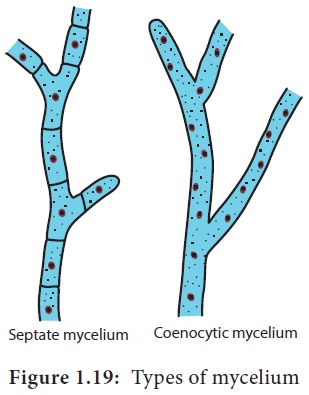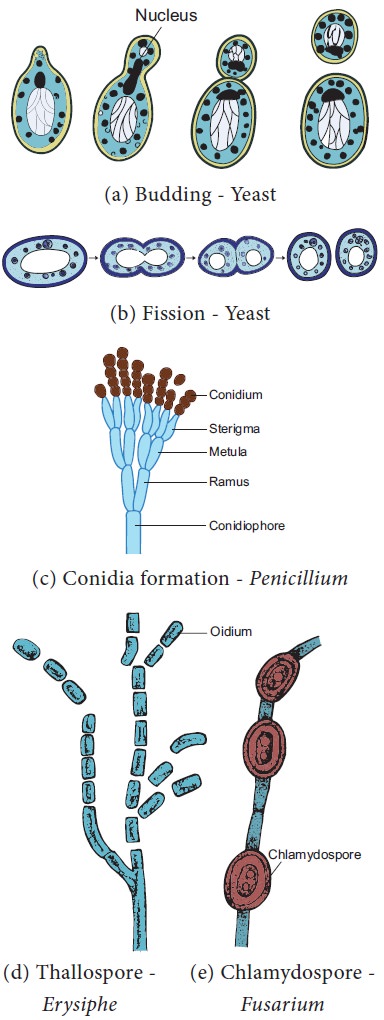Chapter: 11th Botany : Chapter 1 : Living World
General characteristic features of Fungi
General characteristic features
•
Majority of fungi are made up of thin, filamentous
branched structures called hyphae. A number of hyphae get interwoven to form
mycelium. The cell wall of fungi is made up of a polysaccharide called chitin
(polymer of N-acetyl glucosamine).
• The fungal mycelium is categorised into two types based on the presence or absence of septa (Figure 1.19). In lower fungi the hypha is aseptate, multinucleate and is known as coenocytic mycelium (Example: Albugo). In higher fungi a septum is present between the cells of the hyphae. Example: Fusarium.

•
The mycelium is organised into loosely or compactly
interwoven fungal tissues called plectenchyma.
It is further divided into two types prosenchyma
and pseudoparenchyma. In the former
type the hyphae are arranged loosely but parallel to one another In the latter
hyphae are compactly arranged and loose their identity.
•
In holocarpic forms the entire thallus is converted
into reproductive structure whereas in Eucarpic some regions of the thallus are
involved in the reproduction other regions remain vegetative. Fungi reproduce
both by asexual and sexual methods. The asexual phase is called Anamorph and the sexual phase is called
Teleomorph. Fungi having both phases
are called Holomorph.

In general sexual reproduction in fungi includes
three steps 1. Fusion of two protoplasts (plasmogamy) 2. Fusion of nuclei
(karyogamy) and 3. Production of haploid spores through meiosis. Methods of
reproduction in fungi is given in Figure 1.20.
Related Topics